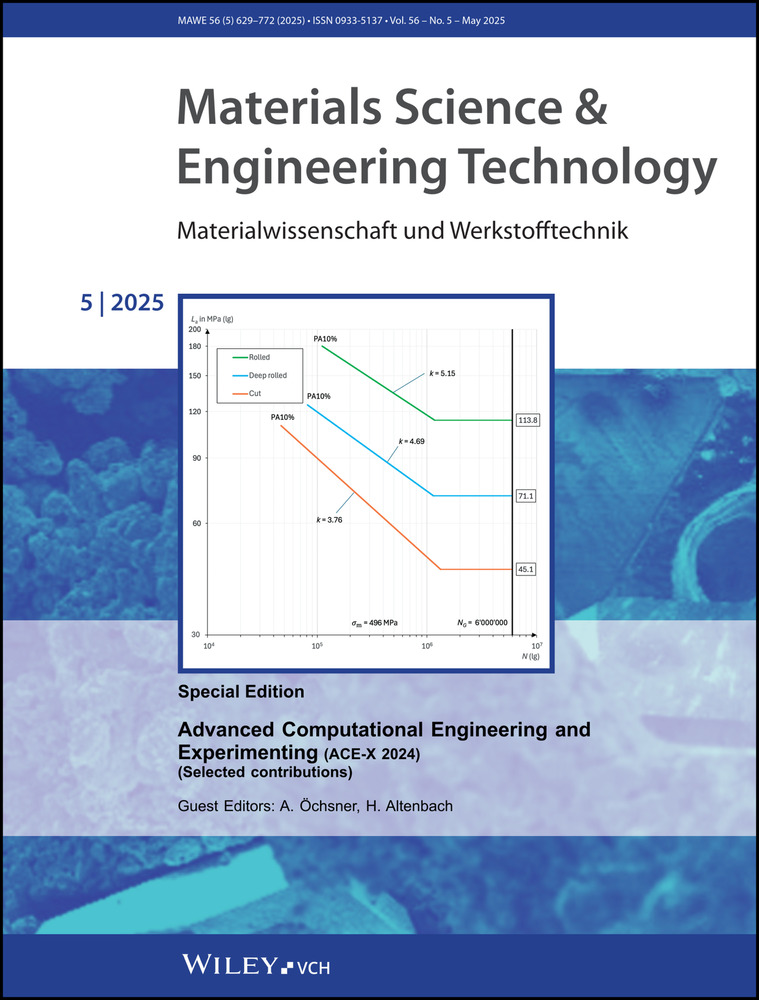Evaluation of the possibility of preparing geopolymer materials based on slags and fly ashes from the thermal treatment of municipal waste
Bewertung der Möglichkeit der Herstellung geopolymerer Werkstoffe auf Grundlage von Schlacken und Flugaschen aus der thermischen Behandlung kommunaler Abfälle
Abstract
enThe main motivation for this research work was the need to find new ways of managing process byproducts of combustion in a way that is safe for the environment and human health. The paper presents research confirming the applicability of the geopolymerization process to stabilize slags and ashes from municipal waste incineration plants. The article aims to assess the possibility of preparing geopolymer materials based on slags and ashes from the process of thermal transformation of municipal waste. The first stage of the work was the characterization of the raw materials used for research using microstructural tests (scanning electron microscopy, x-ray fluorescence and x-ray diffraction). The next stage was the synthesis of the geopolymer material based on the above-mentioned byproducts of the combustion process, including obtaining appropriate samples i. e., beams and cubes. The initial stage of work indicated the need to combine geopolymer materials with the content of slag and fly ash of post-process origin after the thermal transformation of municipal waste, mixed with another additive to improve the cohesion of the material. For this purpose, another product, which came from thermal transformation processes, was used - fly ash from the coal-fired power plant. Then, selected physical and mechanical properties of the prepared materials were determined, including: density, compression and bending tests and water absorption. The microstructure of the obtained materials was also characterized. The obtained results were assessed in terms of the possibilities of using new materials in the construction industry.
Translation abstract
deDie Hauptmotivation für diese Forschungsarbeit war die Notwendigkeit, neue Wege für den Umgang mit Verbrennungsnebenprodukten auf eine Weise zu finden, die für die Umwelt und die menschliche Gesundheit sicher ist. In dem Beitrag werden Forschungsarbeiten vorgestellt, die die Anwendbarkeit des Geopolymerisationsverfahrens zur Stabilisierung von Schlacken und Aschen aus kommunalen Müllverbrennungsanlagen bestätigen. Ziel der Arbeit ist es, die Möglichkeit der Herstellung von Geopolymeren auf der Grundlage von Schlacken und Aschen aus dem Prozess der thermischen Umwandlung von Siedlungsabfällen zu bewerten. Die erste Phase der Arbeit bestand in der Charakterisierung der für die Forschung verwendeten Rohstoffe mit Hilfe von Mikrostrukturtests (Rasterelektronenmikroskopie, Röntgenfluoreszenz und Röntgenbeugung). Die nächste Etappe war die Synthese des geopolymeren Werkstoffes auf der Grundlage der oben genannten Nebenprodukte des Verbrennungsprozesses, einschließlich der Gewinnung geeigneter Proben, d. h. Balken und Würfel. In der Anfangsphase der Arbeiten zeigte sich die Notwendigkeit, geopolymere Werkstoffe mit Schlacke und Flugasche zu kombinieren, die nach der thermischen Umwandlung kommunaler Abfälle anfallen und mit einem weiteren Zusatzstoff zur Verbesserung der Kohäsion des Werkstoffes vermischt werden. Zu diesem Zweck wurde ein weiteres Produkt verwendet, das aus thermischen Umwandlungsprozessen stammt - Flugasche aus einem Kohlekraftwerk. Anschließend wurden ausgewählte physikalische und mechanische Eigenschaften der hergestellten Werkstoffe bestimmt, darunter: Dichte, Druck- und Biegeversuche und Wasseraufnahme. Auch das Mikrogefüge der erhaltenen Werkstoffe wurde charakterisiert. Die erzielten Ergebnisse wurden im Hinblick auf die Möglichkeiten des Einsatzes der neuen Werkstoffe in der Bauindustrie bewertet.
Conflict of Interests
The authors declare no financial or commercial conflict of interest.
Open Research
Data Availability Statement
Data sharing not applicable to this article as no datasets were generated or analyzed during the current study.




